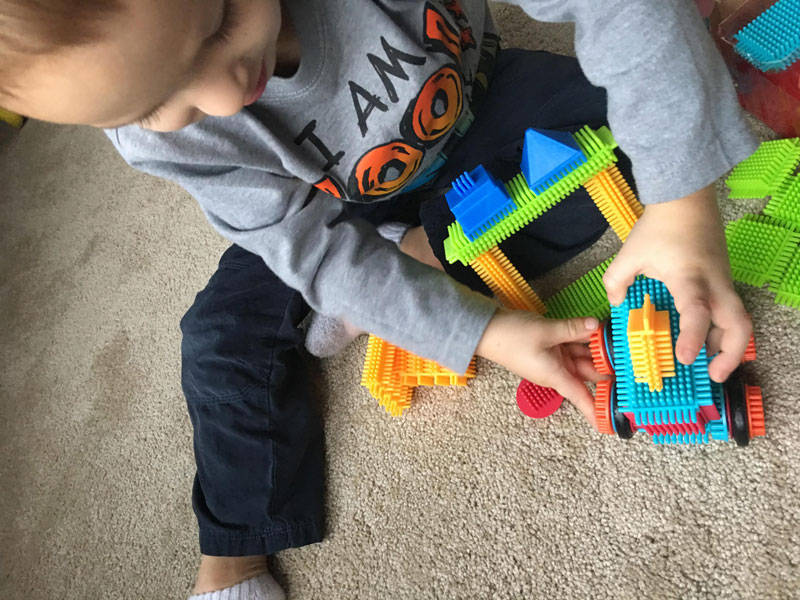Tips and tricks
August 17, 2014
5 ¨ C ¨ to pleasant interventions and understood by all
We have all had at one time or another, the feeling of speaking into space when explaining the rules and situations to the children. We have also had moments of discouragement when we have asked ourselves the questions: Why do they not understand? Why must I repeat the same thing several times? etc.
Obviously, there is no miracle solution, no magic wand, but, there is, for the teachers (and parents), a few guidelines that might facilitate the understanding and application of your requests.
It is the 5 “C” which you will find below. Respect to the principles will help everyone live in a safer environment, thereby promoting the feeling of belonging, self-esteem and a sense of security for the children.
- CLEAR rules: It is important to use words and terms that the children understand so that you can be understood. We must also think about the values conveyed in your message and make sure that the children understand the concept
- CONSISTANT rules: This is probably the most difficult rule to follow, but the most important. Your actions and the application of your rules should not vary depending on your mood. It is important to remain steadfast when it comes to rules that you care about most. Allow yourself some flexibility on rules that will not influence the behavior of your group.
- CONCRETE rules: The rules and the way you express them when you intervene should simply and specifically express the desired behaviors, without possibility of misinterpretation. It is also very important to encourage positive expression of concepts rather than using the negative. (ex “I want you to walk.” rather than “I do not want you to run.”)
- COHERANT rules: You are an example to the children. They see you as an inspiration and it is vital to follow procedures yourself by your actions and words. (Example: If you do not want the children to sit on the tables … you should also use a chair!)
Écouter
Lire phonétiquement
Dictionnaire – Afficher le dictionnaire
- adverbe
- obviously
- of course
- evidently
- clearly
- apparently
- Rules with CONSEQUENCES: It is important to apply consequences directly related to the undesirable behavior or violated rule. The child must take responsibility for his actions and words.
Écouter
Lire phonétiquement
Dictionnaire – Afficher le dictionnaire
- adverbe
- obviously
- of course
- evidently
- clearly
- apparently
Tips and Tricks
Key techniques of intervention with children (part 1)
Over the days, over the weeks and especially over the years, we tend to always use the same means of intervention. They are familiar to us, they work well most of the time and especially, those techniques avoid us from going out of our comfort zone.
I have here some twenty intervention techniques that can be used in day care. Sometimes, some methods are more applicable in specific situations, others may work very well with some children and not at all with others. It is also possible to combine more than one technique in an intervention.
It is by trial and error and keeping a smile that you will succeed and spend a beautiful day with your toddler.
- Offer the children choices
To allow the child to have a sense of control over the events. It is important to offer choices that are realistic and you are able to meet.Obviously, these choices will be selected (or approved) by you … So you keep full control.
- To live the consequences
To allow the child to take responsibility and develop an understanding of the effect of his actions. Consequences should be directly linked with the intervention and the inappropriate behavior. Examples: a child who has destroyed the building of a friend can help him rebuild it, a child who has bitten can hold the wet cloth over the wound of his victim, etc.
- Remind the child of his personal experience
A preschool child is egocentric and has difficulty putting himself in someone else’s place.
By helping the child to remember a similar situation he experienced, leads to him better understanding the impact of his actions (while respecting the development of course).
- Reducing Tension
Offer the child concerned practical ways to calm him down.
As a game, ask the child to breathe deeply, do some yoga positions, handle the play dough, take a book, etc.
- Offer executions (possibility of unwinding)
This technique gets good results, especially for toddlers (0-3 years). Suggest to the child (and often the whole group) to do a big energy exertion. Messy activities can also release various tensions, just as noisy activities like exploring the box of musical instruments. Water play and play dough are other ways to get rid of stress
- The decision to act
This technique is used especially in emergencies, the teacher should intervene immediately and now. It is also used when the health and safety of others (or the child in question) are in danger. This allows the teacher to intervene before the child has felt the pleasure of getting what they want by violence. Whenever possible, notify the child by saying: “You stop or I will stop you.” We intervene depending on the situation.
Écouter
Lire phonétiquement
Dictionnaire – Afficher le dictionnaire
- nom
- thing
- trick
- stuff
- gimmick
- knack
- device
- ploy
- dodge
- thingy
- junk
- devices
- thingummy
- gag
- contraption
- wheeze
- thingumajig
- thingumabob
- Intentional Ignorance
The adult willfully ignores undesirable behaviors that pose no danger. Subsequently, the adult verbalizes to the child his need for attention and offers him more constructive ways to get what he wants.
The teacher reinforces positive behavior with praise.
We often underestimate this technical intervention because, as teachers, we often feel like we are doing nothing. However, this technique can be very effective in many situations.
- The non-verbal intervention (by sign)
This way of intervening preserves the child’s self-esteem because he is the only one who knows that the teacher intervened.
A discrete sign is done to the child to stop his offending behavior. This code reassures the child without belittling him in the eyes of his comrades.
Écouter
Lire phonétiquement
Dictionnaire – Afficher le dictionnaire
- nom
- thing
- trick
- stuff
- gimmick
- knack
- device
- ploy
- dodge
- thingy
- junk
- devices
- thingummy
- gag
- contraption
- wheeze
- thingumajig
- thingumabob
- Eye contact
Eye contact over time is as effective as a touch. Not all children have the same predisposition. It is important to make positive eye contact first. If eye contact is used only to reprimand the child; he might avoid it in future situations.
10. Decode, recognize and verbalize feelings
The teacher verbalizes the feelings experienced by the child.
Putting words on the different behaviors, the teacher helps the child understand what he feels. He feels respected and understood.
This technique should be used several times to allow the child to integrate the different feelings and understand.
Écouter
Lire phonétiquement
Dictionnaire – Afficher le dictionnaire
- nom
- thing
- trick
- stuff
- gimmick
- knack
- device
- ploy
- dodge
- thingy
- junk
- devices
- thingummy
- gag
- contraption
- wheeze
- thingumajig
- thingumabob
- The interpretation
The teacher verbalizes his interpretation as to “why” and the reason for the child’s behavior to enable him to better understand how he feels.
This technique can be used when the situation is mild and harmless. The teacher can use wording such as: “I think you did (name the behavior) because (give explanation).” 12. Full of love
This technique is one of prevention following a series of unwanted behaviors. It works best when there was a consistency in behavior at a specific time.
The teacher gives affection and attention through small gestures of tenderness at specific times of the day. The child knows he will receive his period of hugs and reassurance that he is loved by the adult.
Tips and Tricks
Intervention techniques with children (part 2)
Over the days, over the weeks and especially over the years, we tend to always use the same means of intervention. They are familiar to us, they work well most of the time and especially, those techniques avoid us from going out of our comfort zone.
I have here some twenty intervention techniques that can be used in day care. Sometimes, some methods are more applicable in specific situation, others may work very well with some children and not at all with others. It is also possible to combine more than one technique in an intervention.
It is by trial and error and keeping a smile that you will succeed and spend a beautiful day with your toddler.
- De-dramatization through humor
This technique is particularly effective with children aged 4-5.
Using humor (be careful to avoid the sarcasm), the teacher creates a diversion and, thereby, reducing tension. The child does not get the desired attention and feels unsettled.
- Emotional involvement of the adult in the child’s play
The teacher shows interest in integrating the child’s play in a situation of potential conflict (due to his observations). This intervention should be used sparingly to avoid creating a sense of dependency and the child relies on the adult to resolve his conflicts.
- Spontaneous help
This technique is particularly effective in helping an angry child or a child whom loses patience easily in the execution of a task. It does not allow the child to tolerate his frustration, but it avoids the anger or repeated disruptions.
The teacher carefully observes the child and offers him help before he explodes. For example, if he observes that the child has difficulty cutting, he offers his help.
- Establish clear, consistent, coherent, concrete and practical boundaries
Écouter
Lire phonétiquement
Dictionnaire – Afficher le dictionnaire
- nom
- thing
- trick
- stuff
- gimmick
- knack
- device
- ploy
- dodge
- thingy
- thingummy
- gag
- contraption
- wheeze
- thingumajig
- thingumabob
The teacher explains to the child his expectations as simple and as accurately as possible. It is important to use language understood by the child and short sentences. 17. Attribute responsibility to the child
This technique allows value to the child according to his abilities and interests. The teacher must value the child positively in the performance of his responsibility. 18. Give a deadline
This technique is particularly attractive to opposing children (who always say ¨no¨ delaying the execution of a task, challenging, etc.).
The teacher allows the child to “choose” when he comes into action by giving him a deadline.
- Motivation table (rewards, reinforcers)
Écouter
Lire phonétiquement
Dictionnaire – Afficher le dictionnaire
- pronom
- him
- her
Children are sensitive to anything that brings them pleasure. They are particularly responsive to rewards. The reinforcements can stop a negative behavior or encourage positive behavior. There are two main types of awards:
Tangible rewards (stickers, gifts, stars, etc..) should be used with utmost restraint to avoid dependency and expectations. In addition, some families can not afford to spend on unnecessary items, it is important to also think about other rewards.
Social rewards (hugs, winks, privileged moments, etc.) are based on the adult-child relationship and help develop a relationship, a complicity. The child gets the attention he wants. Use as often as possible.
20. The redevelopment of the area
Sometimes, simply reducing the gaps, to delimit “physically” with furniture the play areas or rearrange the location of corners to resolve a recurring behavior problem.
The proximity of children can lead to conflict. Watching the play periods, the teacher can determine whether the redevelopment can be an attractive option for intervention.
- Restrictions and reduced supply of toys
This method of intervention, temporary and transient, can help resolve certain issues for the child who always takes out every toy without storing or playing with them. Simply reduce considerably the choice of toys available to the children during a certain period to allow the child to acquire the proper behavior. 22. Withdrawal
This intervention technique should be used especially when there is a danger to other children, there’s a big disruption in the group (caused by a child) or when other interventions have been unsuccessful. Remove the child from the group for a short period (we count about 1 minute per age).
It is important to verbalize to the child the situation that caused his withdrawal and to express what is expected of him before granting him the right to return to the group.
- Reformulation
Sometimes, some situations are simply due to the fact that a child has not listened carefully to the basic instructions (inadvertently, through lack of interest or otherwise). The teacher asks the child to repeat the instructions before allowing him to join the group. To preserve the child’s self-esteem, this point should be, wherever possible, only between the teacher and the child concerned when the issue concerns only a child. One can also ask him to repeat the instructions to the group but then it is important to highlight and congratulate the whole group. 24. The model
It is important to always provide a model for the children.
The teacher offers certain ways to the child and remains at his side to support him. With help, the child gradually learns and the teacher gradually detaches himself to allow the child to continue learning his social skills.

